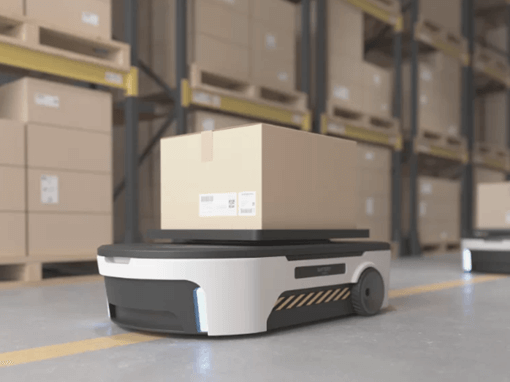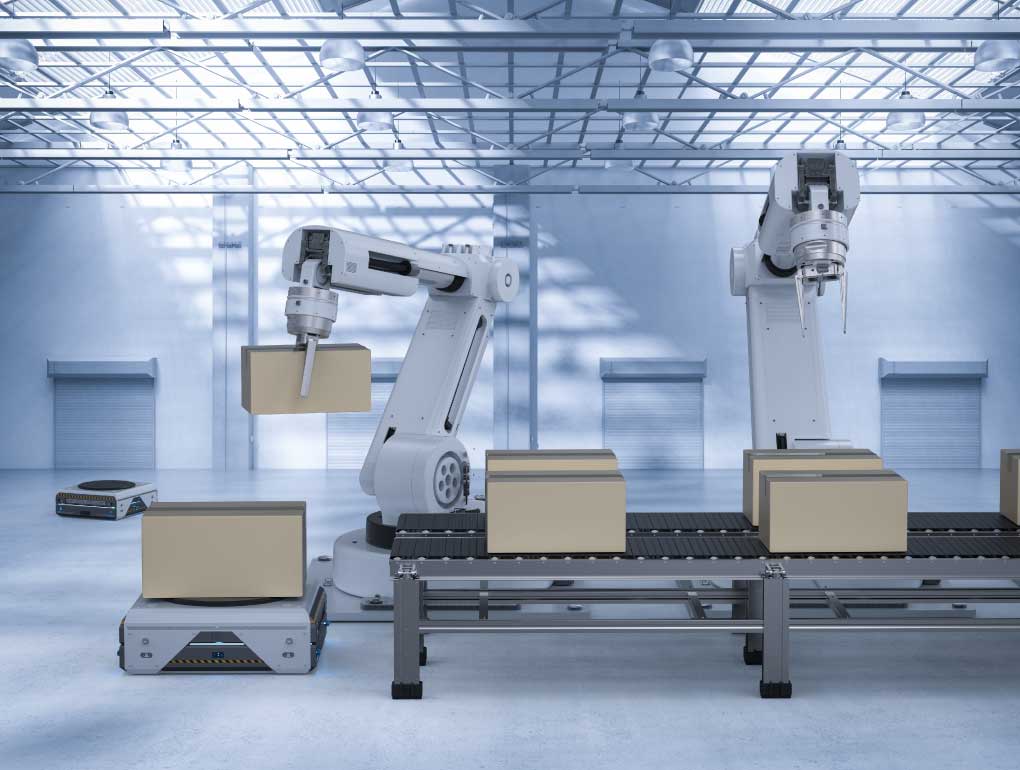If ever there were a time of changing business landscapes, this is it.
Over the years, the use of emerging technology, including various types of automation, has been steadily introduced to all facets of manufacturing and distribution.
This past year, however, with the threat of a global pandemic and the resulting guidelines and restrictions, how we all work, shop, and travel has been significantly changed.
Businesses with an online presence and already geared for E-Commerce grew significantly while businesses that were behind the curve struggled to survive.
Those that did persist are now running as fast as possible to reposition their operations accordingly.
As a result, the world of logistics is experiencing growth like no other time in history.
Coupled with that growth, many businesses see automation/robotics as a possible solution to their many challenges with staffing, safe distancing in the workplace, and needed improvement with operational efficiencies.
Many have aggressively pursued the latest technology, some with great success and others with less than desirable outcomes.
So, what worked and what didn’t?
What do you need to know when considering Mobile Robots for Warehouse Automation?
With most warehouse robotics/automation opportunities, and specifically with autonomous mobile robot (AMR) units the most common uses are:
- goods-to-picker
- walk behind picking
- virtual conveyor for pick and pass
- flexible sorters
- small, medium, and large (pallet) sized unit load transportation
- trash collection and transportation
- (many more not listed here)
The less obvious, but perhaps more important benefit of automating is the data collection and how it can be utilized to optimize your operation.
Depending on the application and provider, autonomous mobile robot systems are able to dynamically recalculate and adjust to the optimum path and priorities.
With those operating in more advanced applications such as goods-to-picker, automation systems can arrange fulfillment priorities and inventory movement patterns based on real-time factors.
They can adapt to changing replenishment requests, available staff, and robots, truck departure times, inventory positions, etc. to optimize your ability to meet service levels.
With any autonomous mobile robot application, there are some basic infrastructure requirements:
- Robust WIFI system (covering the entire work area)
- Generally good floor conditions (try to avoid elevation changes, ramps, or large cracks)
- Reasonable ambient conditions (no extreme temperatures or humidity)
- Reasonable floor space to safely work around other equipment or staff
Each autonomous mobile robot manufacturer will be able to provide an outline of basic requirements, acceptable conditions, and those conditions that could cause concerns specific to their equipment.
However, before you start calling all the different autonomous mobile robot companies, understand, that introducing automation is not the same as purchasing other material handling equipment.
Don’t make the mistake of comparing each manufacturers’ specifications to identify the fastest, smallest, largest, strongest bot (robot).
Sure, the specifications are important, but those who prematurely purchase the equipment based on the specifications and price, are usually those who realize unpleasant surprises when implementing their solution.
Therefore, to begin, it’s essential to determine where automation opportunities need to reside.
Evaluate your entire process by starting with receiving and ending with shipping.
Then, walk through each step and stop along the way.
Repeated tasks or travel over long distances are obvious automation opportunities but pay close attention to the following three critical areas:
- Observation/Evaluation Points – Identify all points along the process that require some form of Observation/Evaluation. It could be counting, identifying an item type or container type, recognizing an order number or specific item details, whether or not one route may be more effective than another, oversized or undersized, damaged or missing components, expiration dates, lot numbers, and so on. The list is endless and sometimes so is the information required to make the proper decision at the Decision Points along the process.
A basic automated system, such as a conveyor system, may use a scanner to identify a tote or case by reading a barcode.
From that, the system can evaluate any information associated with that specific bar code.
That information can then be used at the various decision points.
As you work through your process, you may be surprised at the number of evaluation points that your staff is already performing.
People have the ability to take in vast information about items and their surroundings, then process that information to determine a course of action.
For automation to succeed, these observations must be accurately identified and documented.
It is crucial to clearly identify every Observation/Evaluation point along the process in order to determine what and how to automate.
- Decision Points – Typically utilizing the information gathered through observation/evaluation, this step processes all that data to make a decision on what happens next. Using our example earlier, a scanned barcode on a tote could provide the information needed to enable a WCS (Warehouse Conveyor System) to activate a divert to send that tote to a different pick zone or direct it to package and or shipping.
As mentioned, people can process a tremendous amount of information.
Any automated process must be able to do the same with the information gathered at the Observation/Evaluation Points.
Yet, in order for that to happen, you need to take the time to list all the rules being used at each Decision Point.
Ask yourself what condition(s) or detail(s) would dictate each possible action to be taken, then document that for every Decision Point.
- Action Points – After the data has been collected and evaluated and a decision has been made as to what should happen next, determining the Action Points would follow. In the earlier example, the action was activating a divert to direct a tote to a specific area. As with the other points, watch the process and identify each action that is taken along the way. The human body is an incredible “machine” in your facility process which can observe, evaluate, decide and act seamlessly. Consider how easily a person can instantly adjust their fingers, wrist, elbow, shoulder, hips, legs, and feet to successfully manipulate an object. In terms of automation, that would also describe an 8-axis robot (at a minimum) functioning with extremely complicated end effector tooling and a vision system second to none. We often take for granted the processing and performing abilities with which a person can execute with tremendous adaptability. Thus it’s always good to remember, when looking to achieve the best results, not to overlook even the smallest detail when considering automation.
As you can see, the matrix you complete will not be what you may have previously thought to use to evaluate equipment specifications to identify the proper vendor or machine.
Instead, it will consist of your process and the 3 key areas of data collection and input: Observation/Evaluation Points – Corresponding Decision Points – Corresponding Action Points.
Armed with that information, you are now ready to invite the different autonomous mobile robot manufacturers or Automation Groups to explore your specific automation opportunities.
Keep an open mind, however, as those who work in automation every day may uncover opportunities you never considered.
Or they may be seemingly over-cautious with other uses and guide you to an alternate solution.
Finally, trust that you know your business and trust the automation experts. Because working together will provide you with the best opportunity to successfully automate your facility.
For more resources, visit Hy-Tek’s autonomous mobile robots page to learn more about AGVs, AMRs, and other robotic solutions.
Contact us today to jump-start your supply chain automation.






